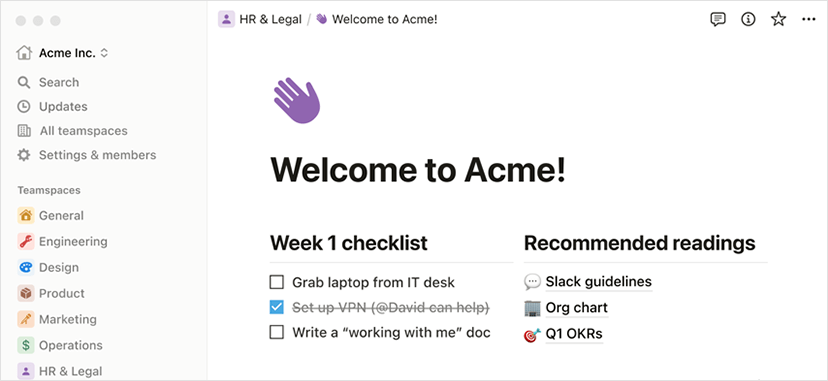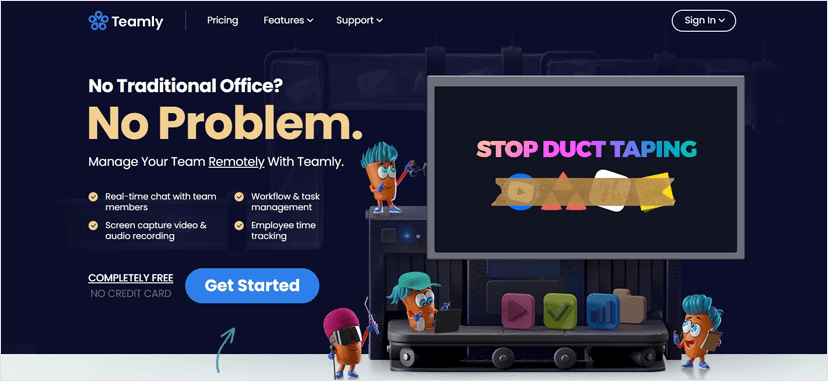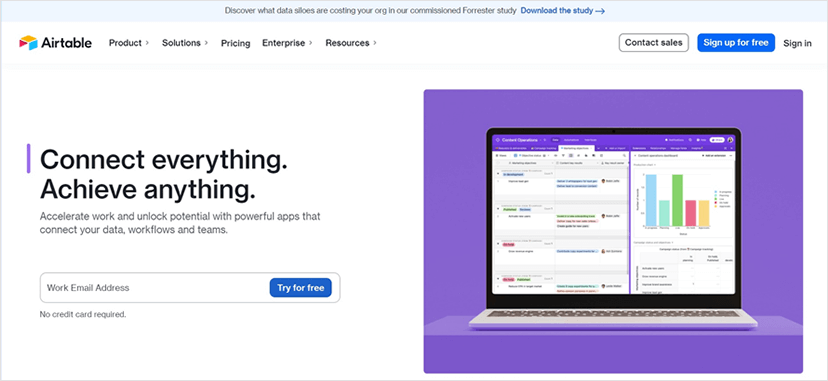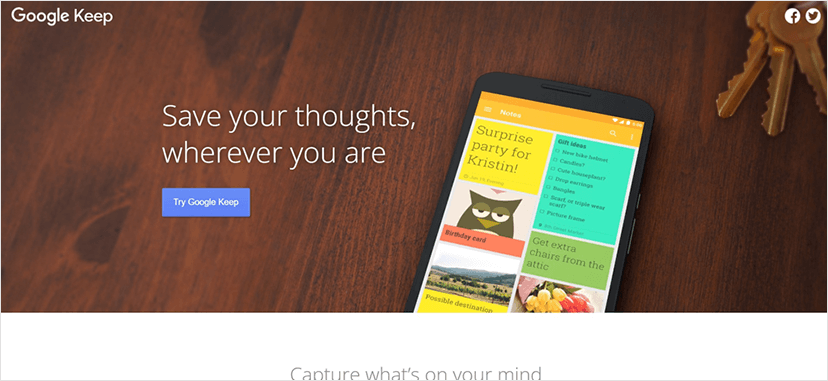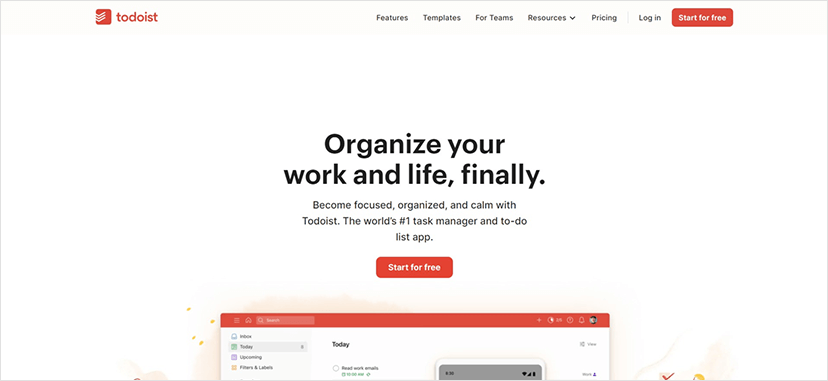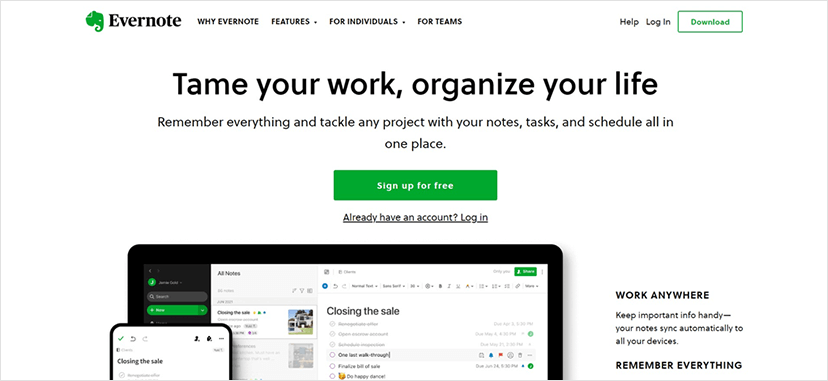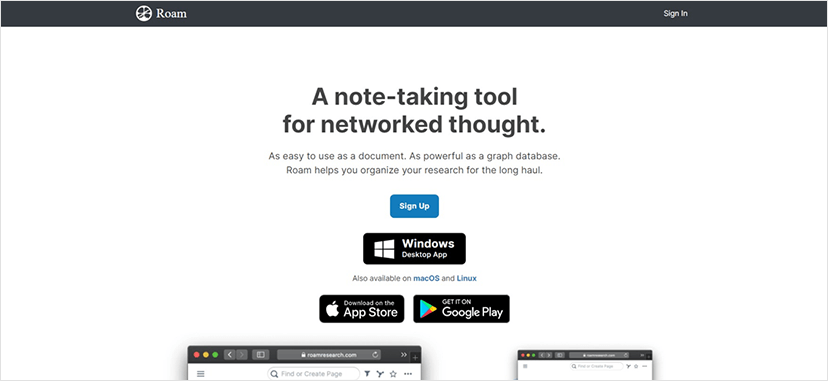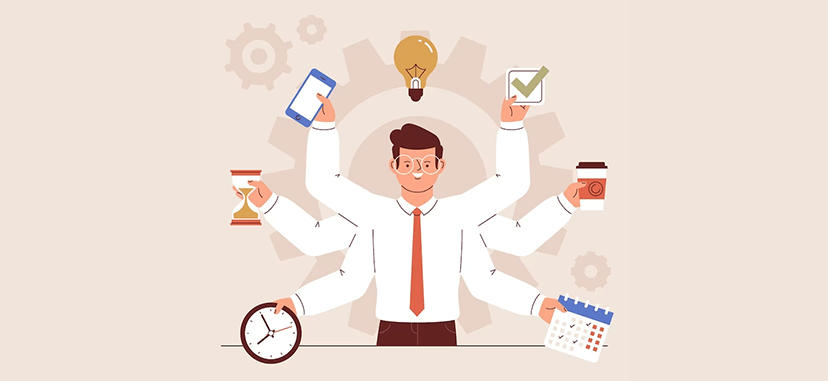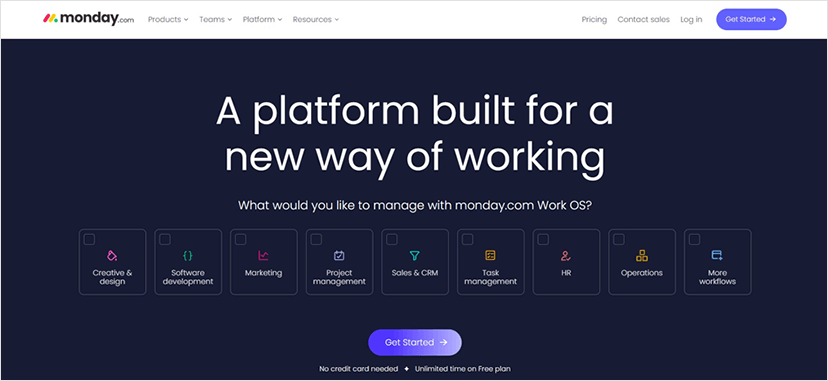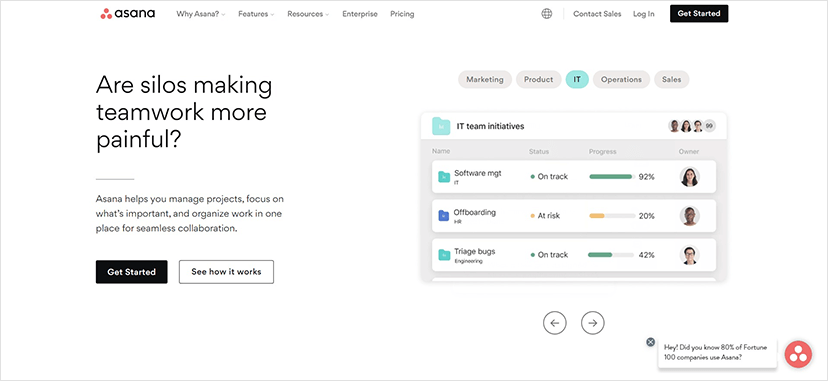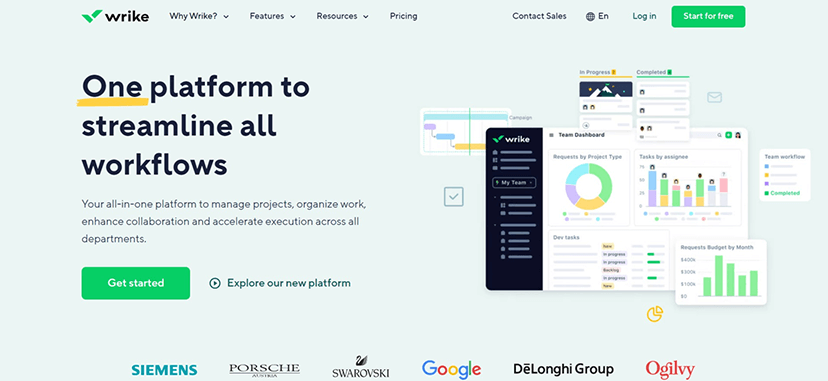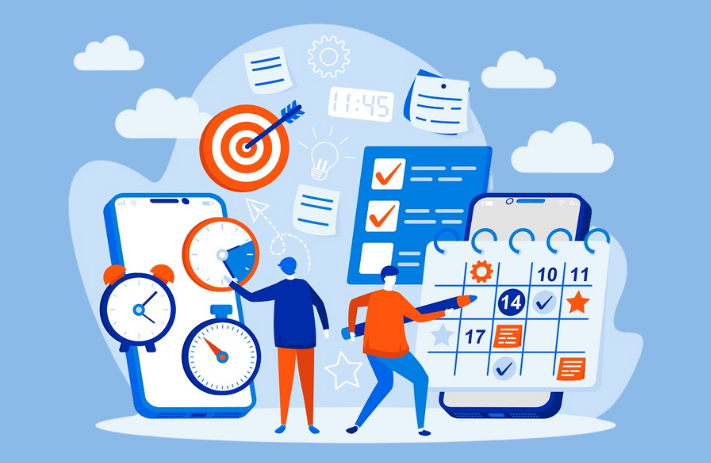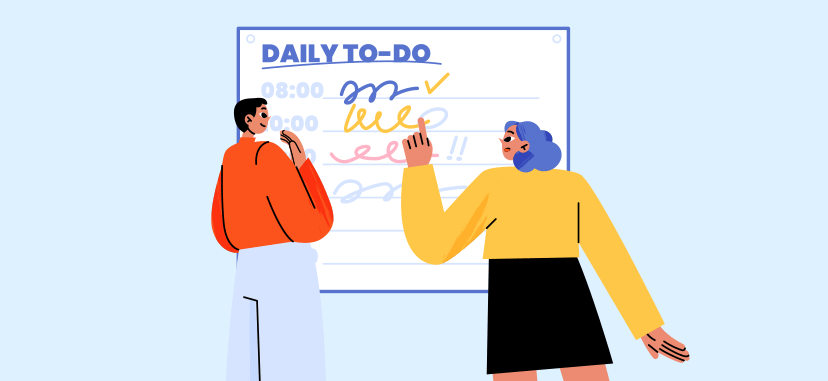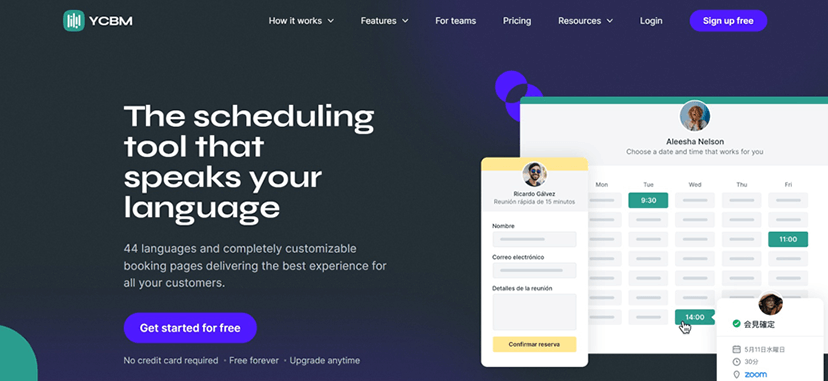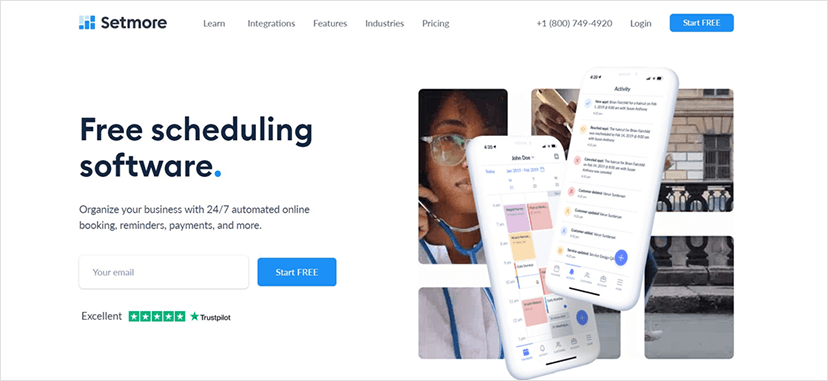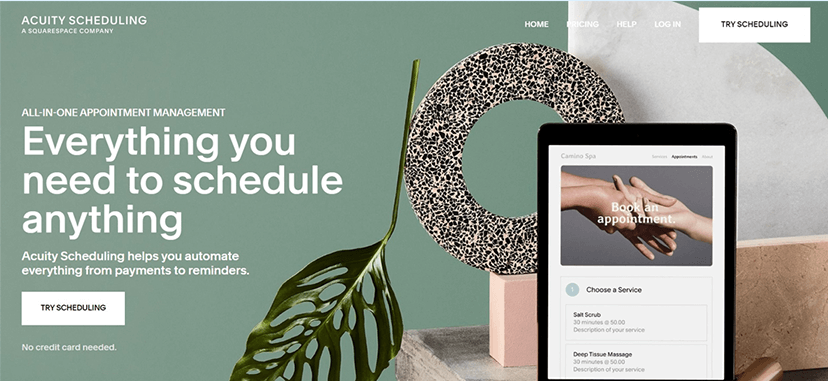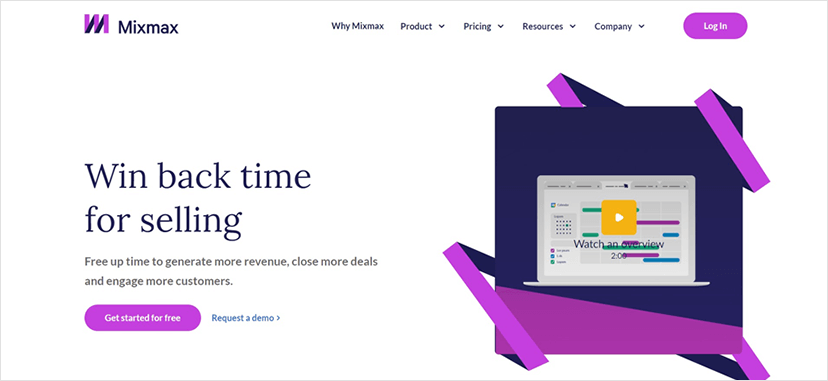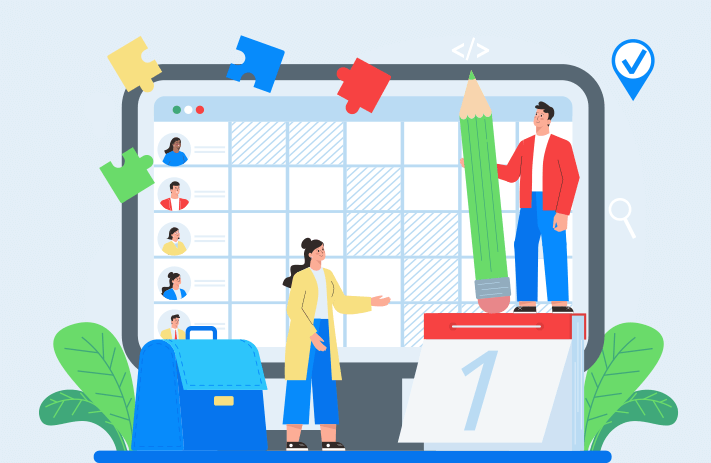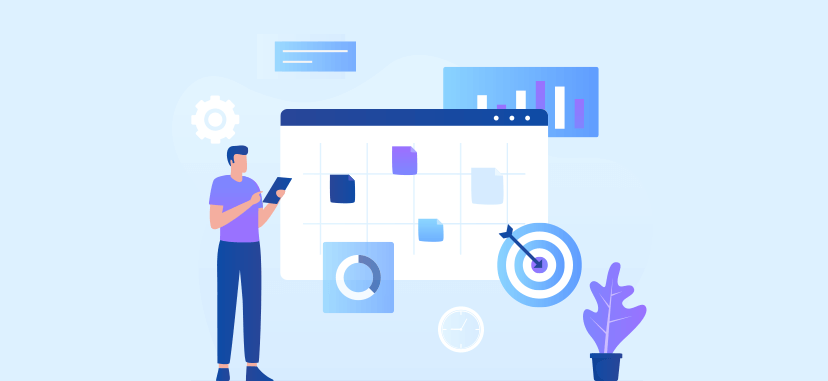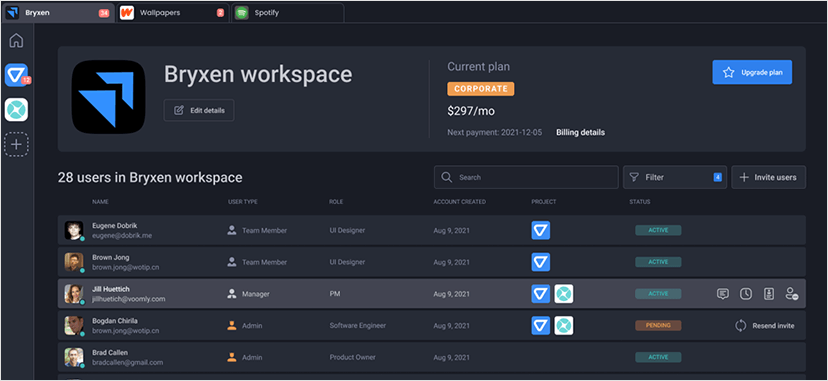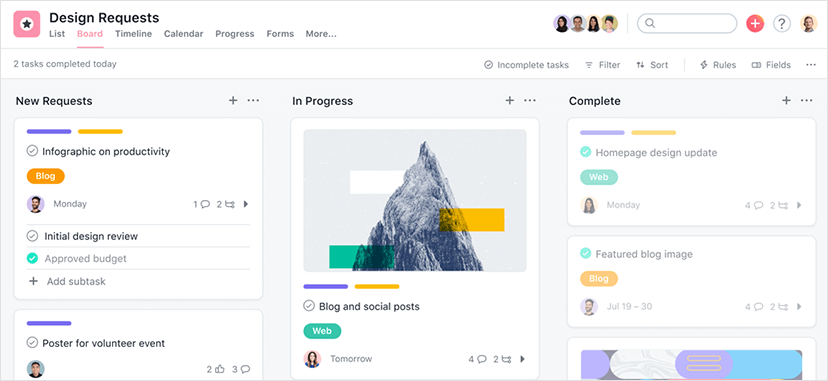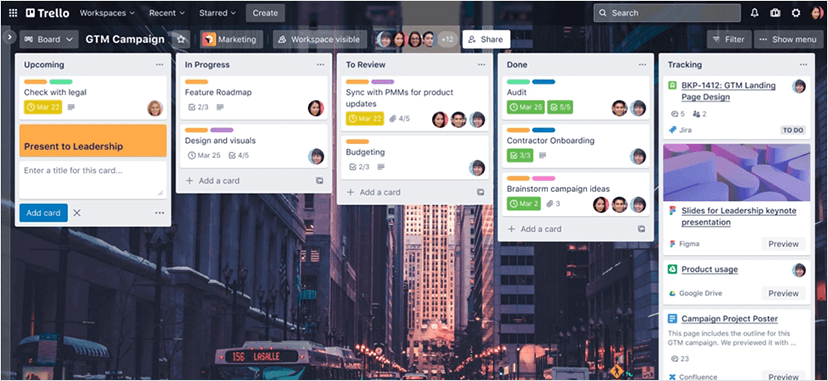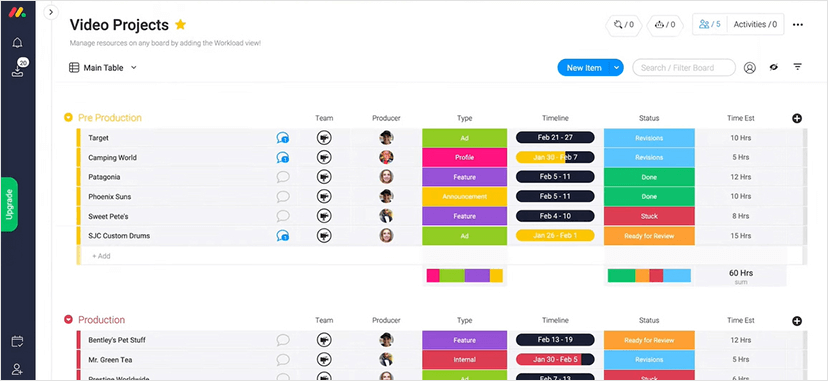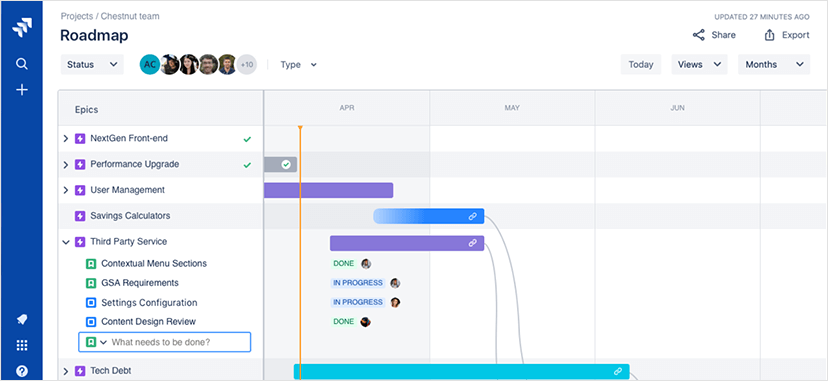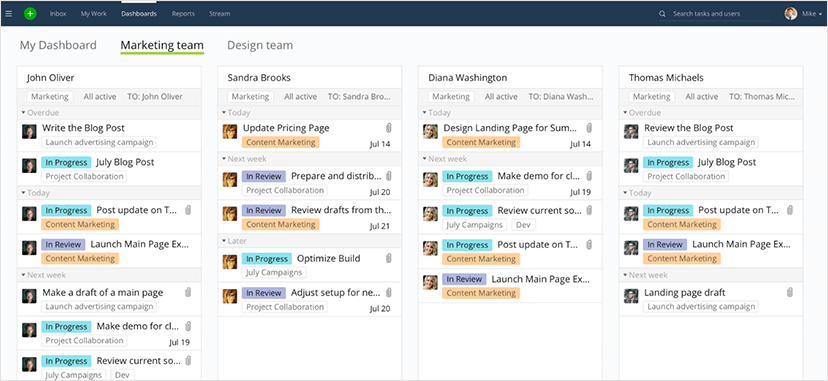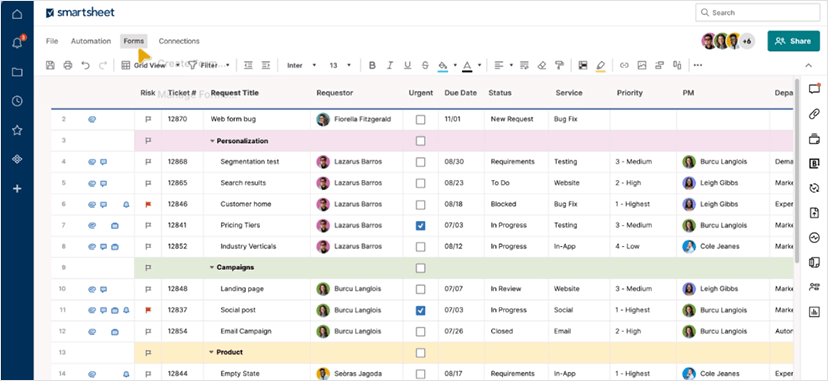At Teamly, we believe that teamwork is the foundation of success, especially when it comes to remote work. After all, our company’s very name is a nod to the power of collaboration!
And it’s not just us — countless business leaders, athletes, and coaches have all attested to the importance of teamwork in achieving greatness.
That’s why we’ve compiled a comprehensive collection of teamwork quotes for our readers — to provide some inspiration and motivation for your own teamwork endeavors.
So whether you’re looking to inspire your remote team, to gain some insights on effective collaboration, or simply to reflect on the importance of teamwork in your own life, this article is the perfect place to start.

Ignite your team spirit! Inspiring teamwork quotes that will motivate you to collaborate
Have you ever been part of a team that just clicked, where everyone’s strengths came together in just the right way to accomplish something amazing?
That’s the power of teamwork, and when you find or develop a team like that, the synergy is incredible.
To help you tap into that magical TEAM (AKA “Together Everyone Achieves More”) energy, we’ve identified some of our favorite teamwork quotes for inspiring the spirit of collaboration!
1. “There is no such thing as a self-made man. You will reach your goals only with the help of others.”
George Shinn
American entrepreneur and author
2. “Great things in business are never done by one person; they’re done by a team of people.”
Steve Jobs
American Cofounder of Apple Computer
3. “Never doubt that a small group of thoughtful, committed citizens can change the world; indeed, it’s the only thing that ever has.”
Margaret Mead
American cultural anthropologist
4. “One hand alone can’t clap.”
African Proverb
5. “No individual can win a game by himself.”
Magic Johnson
American former professional basketball player
6. “The way a team plays as a whole determines its success. You may have the greatest bunch of individual stars in the world, but if they don’t play together, the club won’t be worth a dime.”
Babe Ruth
American former professional baseball player
7. “It is amazing what can be accomplished when no one cares who gets the credit.”
John Wooden
American former college basketball coach
8. “Unity is strength … when there is teamwork and collaboration, wonderful things can be achieved.”
Mattie Stepanek
American poet and peace ambassador
9. “No one can whistle a symphony. It takes a whole orchestra to play it.”
H.E. Luccock
American former minister and professor
10. “It takes two flints to make a fire.”
Louisa May Alcott
American author
11. “The strength of the team is each individual member. The strength of each member is the team.”
Phil Jackson
American former NBA coach
12. “Teamwork makes the dream work.”
John C. Maxwell
American leadership expert, author, coach, and speaker
13. “Alone we can do so little, together we can do so much.”
Helen Keller
American author and political activist
14. “Individually, we are one drop. Together, we are an ocean.”
Ryunosuke Satoro
Japanese author
15. “The whole is greater than the sum of its parts.”
Aristotle
Greek philosopher and scientist
16. “We can achieve more together than we can alone.”
Philip Green
British former CEO and Chairman of Arcadia Group
17. “Teamwork is the ability to work together toward a common vision. The ability to direct individual accomplishments toward organizational objectives. It is the fuel that allows common people to attain uncommon results.”
Andrew Carnegie
American industrialist
18. “Teamwork divides the task and multiplies the success.”
Unknown
19. “Coming together is a beginning. Keeping together is progress. Working together is success.”
Henry Ford
American industrialist
20. “Collaboration allows us to achieve more than we ever could alone.”
Mark Zuckerberg
CEO of Facebook
21. “None of us is as smart as all of us.”
Ken Blanchard
American author and management expert
22. “A lack of trust is a major impediment to teamwork.”
John Wooden
American former college basketball coach
23. “Trust is the foundation of teamwork, and teamwork is the foundation of success.”
Idowu Koyenikan
Nigerian author and speaker
24. “When people are working together, they don’t need to be told what to do. They know what needs to be done.”
Lou Holtz
American former football coach
25. “A team is only as strong as its weakest link.”
Unknown
26. “The greatest thing in the world is to know how to belong to a team.”
John Wooden
American former college basketball coach
27. “Collaboration allows us to take our collective strengths and make them stronger.”
Marillyn Hewson
CEO of Lockheed Martin
28. “There is no limit to what can be accomplished when no one cares who gets the credit.”
John Wooden
American former college basketball coach
29. “If everyone is moving forward together, then success takes care of itself.”
Henry Ford
American industrialist
30. “Walk with the dreamers, the believers, the courageous, the cheerful, the planners, the doers, the successful people with their heads in the clouds and their feet on the ground. Let their spirit ignite a fire within you to leave this world better than you found it.”
Wilferd A. Peterson
American author

Successful teams share several similarities: Teamwork quotes about what makes a great team
Successful teams work together seamlessly to achieve their goals … and whether those goals exist in the workplace, on a sports field, or in any other setting, the hallmarks of a great team are always the same.
In this section, we’ll explore some of the key traits and characteristics that define a great team, as described by some of the most insightful and inspiring individuals of our time.
From trust and communication to shared goals and a positive attitude, these quotes capture the essence of what makes a team truly great.
31. “It’s not the will to win that matters — everyone has that. It’s the will to prepare to win that matters.”
Paul “Bear” Bryant
American former college football coach
32. “The best teamwork comes from men who are working independently toward one goal in unison.”
James Cash Penney
American Founder of J.C. Penney
33. “Success requires unity of effort.”
Dwight D. Eisenhower
Former President of the United States
34. “A team that trusts is a team that triumphs.”
Unknown
35. “A successful team is a group of many hands but of one mind.”
Bill Bethel
Business consultant
36. “The cornerstone of a great team is trust, without it, no amount of talent or skill can compensate.”
Michael Jordan
American former professional basketball player
37. “The highest levels of performance come to those who trust their teammates.”
Ross Perot
American Founder of Electronic Data Systems
38. “The best teams have trust. They trust in each other and they trust in their coaches.”
Vince Lombardi
American former professional football coach
39. “One man can be a crucial ingredient on a team, but one man cannot make a team.”
Kareem Abdul-Jabbar
American former professional basketball player
40. “The best teams are made up of a collection of people who complement each other and work together to achieve a common goal.”
Sheryl Sandberg
COO of Facebook
41. “If a team is to reach its potential, each player must be willing to subordinate his personal goals to the good of the team.”
Bud Wilkinson
American former professional football player, coach, and broadcaster
42. “The mark of a great team is not the absence of conflict, but the ability to handle conflict by focusing on common goals.”
Pat Summitt
American former college basketball coach
43. “The most important aspect of a team is trust. If a team can’t trust each other, it will never be successful.”
Phil Jackson
American former professional basketball coach
44. “The key to successful teamwork is communication.”
Michael Jordan
American former professional basketball player

When the going gets tough: Teamwork quotes about perseverance
Whether it’s overcoming a difficult project, navigating office politics, or simply facing unexpected roadblocks, perseverance is what sets successful teams apart.
The following quotes capture the spirit of perseverance and provide inspiration for teams that are facing challenges. Remember that through teamwork, anything is possible!
45. “The difference between try and triumph is just a little umph.”
Unknown
46. “Champions keep playing until they get it right.”
Billie Jean King
American former professional tennis player
47. “The greatest glory in living lies not in never falling, but in rising every time we fall.”
Nelson Mandela
Former President of South Africa
48. “A successful person is one who can lay a firm foundation with the bricks that others throw at him or her.”
David Brinkley
American former newscaster
49. “Success is not final, failure is not fatal: it is the courage to continue that counts.”
Winston Churchill
Former Prime Minister of the United Kingdom
50. “Successful people do what unsuccessful people are not willing to do. Don’t wish it were easier; wish you were better.”
Jim Rohn
American entrepreneur and motivational speaker
51. “I have not failed. I’ve just found 10,000 ways that won’t work.”
Thomas Edison
American inventor and businessman
52. “Believe in yourself and all that you are. Know that there is something inside you that is greater than any obstacle.”
Christian D. Larson
American author
53. “Success is how high you bounce when you hit bottom.”
George S. Patton
American general
54. “I have failed again and again throughout my life. And that is why I succeed.”
Michael Jordan
American former professional basketball player
55. “You may encounter many defeats, but you must not be defeated. In fact, it may be necessary to encounter the defeats, so you can know who you are, what you can rise from, how you can still come out of it.”
Maya Angelou
American poet and civil rights activist
56. “Our greatest weakness lies in giving up. The most certain way to succeed is always to try just one more time.”
Thomas Edison
American inventor and businessman
57. “Perseverance is not a long race; it is many short races one after another.”
Walter Elliott
Scottish author and clergyman
58. “Don’t watch the clock; do what it does. Keep going.”
Sam Levenson
American humorist and writer
59. “Fall seven times, stand up eight.”
Japanese Proverb
60. “Never give up, for that is just the place and time that the tide will turn.”
Harriet Beecher Stowe
American abolitionist and author
61. “There is no failure, only feedback.”
Robert Allen
American entrepreneur and author
62. “It’s not how far you fall, but how high you bounce that counts.”
Zig Ziglar
American author and motivational speaker
63. “Keep on going, and the chances are that you will stumble on something, perhaps when you are least expecting it. I never heard of anyone ever stumbling on something sitting down.”
Charles F. Kettering
American inventor, engineer, and businessman
64. “You miss 100% of the shots you don’t take.”
Wayne Gretzky
Canadian former professional ice hockey player

Having the right stuff: Teamwork quotes about achieving success
Success typically involves some combination of determination, hard work, and perseverance. In this section, we’ll delve into a compilation of quotes that provide insight into what it takes to be successful.
Whether you’re searching for guidance to reach your own personal goals, or seeking to motivate your team to success, these quotes offer a wealth of insights.
So, let’s dive in and discover what it takes to be successful from some of the greatest thinkers of our generation.
65. “Success is the result of perfection, hard work, learning from failure, loyalty, and persistence.”
Colin Powell
American former Secretary of State
66. “It’s not about being the best. It’s about being better than you were yesterday.”
John Wooden
American former college basketball coach
67. “Success is a journey, not a destination. The doing is often more important than the outcome.”
Arthur Ashe
American former professional tennis player
68. “Success is the sum of small efforts, repeated day in and day out.”
Robert Collier
American author and publisher
69. “Success is the result of focusing the full power of all you are on what you have a burning desire to achieve.”
Wilferd A. Peterson
American author
70. “Success is not a one-time event. It’s a process that continues every day.”
John C. Maxwell
American leadership expert, author, coach, and speaker
71. “The most important measure of how good a game I’d played or how good a practice I’d had was what I did in the last five minutes of the game or the last twenty minutes of the practice. Victory is won not in miles but in inches. Win a little now, hold your ground, and later, win a little more.”
Pat Riley
American former professional basketball player and coach
72. “Success is not the key to happiness. Happiness is the key to success.”
Steve Jobs
American Cofounder of Apple Inc.
73. “Successful people never worry about what others are doing.”
John C. Maxwell
American leadership expert, author, coach, and speaker
74. “Successful people are not afraid of failure. They know failure is just a step towards success.”
Michael Jordan
American former professional basketball player
75. “Success is the product of daily habits, not once in a while breakthroughs.”
John C. Maxwell
American leadership expert, author, coach, and speaker
76. “Success is where preparation and opportunity meet.”
Bobby Unser
American race car driver
77. “Successful people are willing to face their fears and overcome them.”
Brian Tracy
Canadian-American motivational speaker and author
78. “Success is a process, not a destination.”
Harvey Mackay
American entrepreneur and author
79. “Success is never final, and failure is never fatal. It’s courage that counts.”
John Wooden
American former college basketball coach
80. “Individual commitment to a group effort – that is what makes a team work, a company work, a society work, a civilization work.”
Vince Lombardi
American former professional football coach
81. “The only place where success comes before work is in the dictionary.”
Vidal Sassoon
British hairdresser and businessman
82. “The difference between successful people and really successful people is that really successful people say no to almost everything.”
Warren Buffett
American investor, philanthropist, and CEO of Berkshire Hathaway
83. “Don’t wait for opportunities, create them.”
Unknown
84. “The only way to achieve success is to keep moving forward.”
Walt Disney
American Cofounder of The Walt Disney Company
85. “Success is simple. Do what’s right, the right way, at the right time.”
Arnold H. Glasow
American writer and humorist

Taking ownership is key: Teamwork quotes about accountability
If you’ve ever been on a team where someone shirked responsibility and left everyone else to pick up the slack, you’re already well-aware why accountability is such a crucial aspect of successful teamwork.
To drive that point home, we’ve compiled a collection of quotes that highlight the importance of accountability when it comes to teams.
So, read on to get inspired about taking ownership today — or to find a quote you can add to your email signature to (discreetly!) inspire the slackers on your team.
86. “Without accountability, there can be no trust.”
Stephen Covey
American educator, author, businessman, and keynote speaker
87. “Accountability separates the wishers in life from the action-takers that care enough to see things through to completion.”
Chris Hardy
American speaker and author
88. “Accountability is the bridge between goals and accomplishment.”
John C. Maxwell
American leadership expert, author, coach, and speaker
89. “Camaraderie doesn’t happen by accident; developing a strong sense of trust, accountability, and togetherness around team goals requires intentional effort.”
Don Yaeger
American journalist
90. “Transparency increases credibility and accountability.”
Park Won-soon
South Korean politician
91. “Accountability is the key to unlocking unlimited potential.”
Unknown
92. “Accountability breeds response-ability.”
Stephen Covey
American educator, author, businessman, and keynote speaker
93. “If you are building a culture where honest expectations are communicated and peer accountability is the norm, then the group will address poor performance and attitudes.”
Henry Cloud
American psychologist
94. “The best kind of accountability on a team is peer-to-peer. Peer pressure is more efficient and effective than going to the leader, anonymously complaining, and having them stop what they are doing to intervene.”
Patrick Lencioni
American writer
95. “We either believe in accountability or we don’t.”
Dana Loesch
American activist
96. “We need, first of all, for there to be accountability, for there to be somebody who is responsible for enforcing standards and holding people’s feet to the fire.”
Jennifer Granholm
American politician
97. “Great companies have high cultures of accountability, it comes with this culture of criticism I was talking about before, and I think our culture is strong on that.”
Steve Ballmer
American businessman

Being the head honcho: Teamwork quotes about leadership
A strong leader sets the tone for the entire team, inspires and motivates its members, and helps to ensure that everyone is working towards the same goal.
Because the leader acts as the driving force behind the team’s success, their actions and attitudes have a significant impact on the team’s performance and morale … which is why a great leader is critical to the formation of a strong team.
In this section, we’ve gathered a collection of quotes about what great leadership looks like in a team setting. Whether you’re a seasoned leader or just starting to step into a leadership role, these quotes will provide insights and inspiration to help you lead your team to success.
98. “The great leaders are like the best conductors — they reach beyond the notes to reach the magic in the players. They listen with their eyes and their ears, with every fiber of their being. The best conductors are those who reach into their own hearts and give something of themselves that they can never get back. They create a special blend of sound and silence, of perfection and humanity. It’s a delicate balance, one that requires not only great skill, but great love.”
Robert Dilenschneider
American author and Founder of The Dilenschneider Group
99. “A leader is one who knows the way, goes the way, and shows the way.”
John C. Maxwell
American leadership expert, author, coach, and speaker
100. “Leadership is not about being in charge. It’s about taking care of those in your charge.”
Simon Sinek
British-American author and speaker
101. “A leader takes people where they want to go. A great leader takes people where they don’t necessarily want to go, but ought to be.”
Rosalynn Carter
American former First Lady
102. “A good leader takes a little more than his share of the blame, a little less than his share of the credit.”
Arnold H. Glasow
American humorist
103. “The greatest leader is not necessarily the one who does the greatest things. He is the one that gets the people to do the greatest things.”
Ronald Reagan
American former President
104. “The most powerful leadership tool you have is your own personal example.”
John Wooden
American former college basketball coach
105. “The task of leadership is not to put greatness into humanity, but to elicit it, for the greatness is already there.”
John Buchan
Scottish novelist and historian
106. “Leadership is not about being in control. It’s about taking care of those in your charge.”
Simon Sinek
British-American author and speaker
107. “The best leaders are those most interested in surrounding themselves with assistants and associates smarter than they are.”
John C. Maxwell
American leadership expert, author, coach, and speaker
108. “A true leader has the confidence to stand alone, the courage to make tough decisions, and the compassion to listen to the needs of others.”
Douglas MacArthur
American former General
109. “A leader is best when people barely know he exists, when his work is done, his aim fulfilled, they will say: we did it ourselves.”
Lao Tzu
Chinese philosopher
110. “Leadership is the capacity to translate vision into reality.”
Warren Bennis
American scholar, organizational consultant, and author
111. “Great leaders are willing to sacrifice their own personal interests for the good of the team.”
John Wooden
American former college basketball coach
112. “The most effective way to do it, is to do it.”
Amelia Earhart
American aviator
113. “Leadership is not a person or a position. It is a complex moral relationship between people, based on trust, obligation, commitment, emotion, and a shared vision of the good.”
Joanne B. Ciulla
American scholar
114. “Leadership is lifting a person’s vision to high sights, the raising of a person’s performance to a higher standard, the building of a personality beyond its normal limitations.”
Peter F. Drucker
Austrian-American management consultant and educator
115. “To handle yourself, use your head; to handle others, use your heart.”
Eleanor Roosevelt
Former First Lady of the United States
116. “The most effective leaders are those who have the courage to challenge their own beliefs and assumptions.”
Unknown
117. “The key to successful leadership today is influence, not authority.”
Ken Blanchard
American author and speaker on management
118. “The leader has to be practical and a realist, yet must talk the language of the visionary and the idealist.”
Eric Hoffer
American social writer and philosopher
119. “The leader is one who mobilizes others toward a goal shared by leaders and followers.”
Rosalynn Carter
Former First Lady of the United States
120. “The best leaders are those who can also be followers. They are people who understand that the group is greater than the individual.”
John C. Maxwell
American leadership expert, author, coach, and speaker
121. “The best way to predict the future is to create it.”
Peter F. Drucker
Austrian-American management consultant and educator
122. “The most important thing about leadership is that it transforms ordinary people into great people.”
John C. Maxwell
American leadership expert, author, coach, and speaker
123. “The most dangerous leadership myth is that leaders are born — that there is a genetic factor to leadership. That’s nonsense; in fact, the opposite is true. Leaders are made rather than born.”
Warren Bennis
American scholar, organizational consultant, and author
124. “The best leaders are those who are able to inspire others to greatness.”
John C. Maxwell
American leadership expert, author, coach, and speaker

Laughter is the best medicine: Funny teamwork quotes
We’ve saved the best quotes for last … now that you’ve been inspired, motivated, and awed by the power of teamwork, it’s time to laugh!
In this section, you’ll find a collection of funny teamwork quotes that offer a lighthearted perspective on the challenges and rewards of working together.
So take a break from all the oh-so-serious quotes and enjoy some humorous takes on teamwork, many of which you may remember from your favorite movies and TV shows!
125. “Together, we can do anything … except maybe math.”
The Simpsons
American TV show
126. “A team is only as strong as its coffee supply.”
Friends
American TV show
127. “One man alone can be pretty dumb sometimes, but for real bona fide stupidity, there ain’t nothin’ can beat teamwork.”
Edward Abbey
American author
128. “Alone we can do so little, but together we can order a large pizza with extra toppings.”
Unknown
129. “Sure, there’s no ‘i’ in team, but there is an ‘m’ and an ‘e’.”
Kevin Myers
Irish journalist
130. “Teamwork means never having to take all the blame yourself.”
Stephen Hawking
English theoretical physicist
131. “A good team is like a casserole, only those close to you know what goes into it.”
Unknown
132. “Together, we’re like a group of superheroes, just without the superpowers or the cool costumes.”
Modern Family
American TV show
133. “We’re like a puzzle, every piece is important, even the weird shaped ones.”
Fringe
American TV show
134. “When a team works together, it’s like a well-oiled machine, just with a lot more yelling and confusion.”
Veep
American TV show
135. “A team is like a family, and sometimes you just want to strangle your little brother.”
Friends
American TV show
136. “The only way to survive a disaster is with teamwork and lots of snacks.”
The Office
American TV show
137. “Together, we’re like a well-oiled machine… as long as no one puts in the wrong oil.”
Parks and Recreation
American TV show
138. “We’re like a well-choreographed dance troupe, if the dance was falling down stairs.”
The Big Bang Theory
American TV show
139. “A team is only as good as its weakest player, unless that player is Chandler Bing.”
Friends
American TV show
140. “TEAMWORK: A few harmless flakes working together can unleash an avalanche of destruction.”
Justin Sewell
American author
141. “I love teamwork. I love the idea of everyone rallying together to help me win.”
Jarod Kintz
American author
142. “Would I rather be feared or loved? Easy — both. I want people to be afraid of how much they love me.”
The Office
American TV show
143. “Two heads are better than one, unless there’s a better head out there.”
Goldmember
American movie

Live Your Best (Team) Life! Our Top 10 Tips for Fostering Teamwork
We hope that the collection of quotes we’ve curated has brought you the full range of good feels — laughter, inspiration, and enthusiasm for what your team can achieve when its members work together! Now, it’s time to build on what you’ve learned thus far.
In the following section, we’re going to share our 10 best tips for fostering teamwork. So, keep reading to discover actionable strategies that’ll help you strengthen teamwork in your workplace.
1. Clearly define roles and responsibilities
One way to promote teamwork is by clearly defining each team member’s role and responsibilities. Doing this is crucial because it sets the foundation for effective collaboration, while also helping to avoid confusion, misunderstandings, and duplicated efforts.
When everyone knows what they’re responsible for, they can focus on their own tasks more efficiently, which can lead to higher quality work and better results. Plus, clearly defined roles and responsibilities increase job satisfaction, improve morale, and ultimately, lead to a more successful team!
2. Establish ground rules
Ground rules offer a set of guidelines that dictate how team members should behave and communicate with each other. When rules are in place, team members have a common understanding of what is acceptable behavior, which can help to prevent conflicts and promote a positive working environment.
For example, some of the ground rules for a team might include: treating other members with dignity and respect, being open to new ideas, following through on commitments, and remaining truthful and transparent in communications.
As you can probably imagine, rules like these help to create a collaborative working environment. Even better, because team members understand what’s expected of them and each other, it’s not only easier for them to get along, but they can also achieve more together, through the magic of synergy. Woot-woot!
3. Foster a positive, inclusive culture
Teamwork flourishes in positive workplaces where everyone feels valued, respected, and supported. Because team members are more motivated, happy, and engaged in these environments, they’re better collaborators, which helps to create a thriving team dynamic.
Of course, one of the keys to fostering a positive culture is to promote inclusivity and diversity. In practice, this means that you’ll want to be sure to welcome different perspectives and backgrounds, as well as to encourage team members to bring their unique experiences and ideas to the table.
By doing so, not only can teams benefit from the creativity and innovation that comes from diverse perspectives, but they can also avoid the limitations of groupthink.
Additionally, it’s important for leaders to lead by example. For instance, if leaders demonstrate a positive attitude and foster a supportive work environment, team members are much more likely to follow suit.
4. Promote team-building activities outside the office
Another great way to foster teamwork is by promoting team-building activities outside the office, such as a team outing to a sporting event or a group volunteer project.
Activities like these have many benefits. For one, they help to build stronger relationships and a sense of community among team members. Because team members get to know each other on a personal level, they begin to trust and support each other more in the workplace.
Additionally, team-building activities can help to break down barriers and improve communication. When team members are participating in an activity together, they’re more likely to open up and share their thoughts and ideas. This can help to build a sense of collaboration, even when they’re not working on a specific project together.
Just keep in mind when planning activities that it’s important to make sure everyone on the team has the opportunity to participate. This might mean providing transportation, covering the cost of the activity, or providing accommodations for team members with disabilities.
You’ll also want to choose outings that align with your team’s interests and strengths. For example, if your team is highly competitive, a sporting event or a scavenger hunt might be a good fit. On the other hand, if your team is more focused on community service, a volunteer project might be a better bet.
By providing opportunities for team members to interact, bond, and have fun outside of work,you can help to build stronger team relationships and ensure that members work together more effectively.
5. Communicate clearly
Clear communication can help team members avoid misunderstandings, resolve conflicts, and work together more efficiently. So, how can teams get good at communicating? Great question!
One way is by clarifying expectations around which communication channels should be used by your team and in what scenarios. For example, you might establish a guideline that your team will use email for routine updates, while reserving meetings for more complex or sensitive discussions.
You can also improve communication by asking whether everyone on the team understands or has questions after sending a written communication or explaining something verbally. This gives people the opportunity to seek clarification as needed, so misunderstandings don’t continue unchecked.
Finally, for teams that aren’t working remotely, members should aim to communicate in-person when possible. As wonderful as written communication is, it lacks certain cues like tone and body language, which unfortunately, makes emails and texts more prone to misinterpretation.
6. Kick off new projects with brainstorming sessions
Brainstorming is a great way to kick off new projects because it fosters teamwork and encourages collaboration. By bringing together a diverse group of individuals with different backgrounds, skills, and perspectives, brainstorming sessions can help generate a wide range of ideas and possibilities that wouldn’t be feasible if each person were working alone.
Through the exchange of ideas and active listening, team members can build trust, respect, and understanding of each other, which can lead to more effective communication and collaboration throughout the project.
Brainstorming also creates a sense of ownership and shared responsibility for the project among the team members, increasing their motivation and engagement in the work.
Finally, by involving everyone in the initial stages of the project, brainstorming can lead to better outcomes and more successful project implementation, as the team members feel invested in the project and are more likely to work together towards a common goal.
7. Avoid micromanaging … and trust your team
Micromanaging sends a message to team members that they can’t be trusted. And as you can imagine, that negative message can lead to low morale, reduced motivation, and less creativity.
By contrast, when managers and coworkers show their teams they trust them by providing the autonomy they need to do their work, team members feel empowered and engaged.
Trust also helps to build a sense of ownership and accountability among team members, which can foster greater creativity and innovation.
8. Provide feedback
Feedback is an essential component of fostering teamwork, because it encourages collaboration and continuous improvement.
By providing constructive feedback, team members can share their observations and insights on each other’s performance, and help identify areas for improvement or development.
This habit creates a culture of trust and respect, where team members feel comfortable giving and receiving feedback, and are committed to helping each other grow and develop.
Additionally, feedback can help clarify expectations, improve communication, and build stronger relationships among team members. It can also help avoid misunderstandings and conflicts that can arise from differences in perception or interpretation.
As a result, feedback is a vital tool for helping team members work together more effectively and achieve their shared goals, while building a sense of community and shared responsibility.
9. Offer training and development opportunities
Offering training and development opportunities is a powerful strategy for fostering teamwork, as it provides team members with the resources they need to build their skills and knowledge, and improve their performance. Plus, because team members feel valued and supported when offered these types of opportunities, they tend to be more motivated and engaged.
Additionally, training and development initiatives create a culture of continuous learning, where team members are encouraged to explore new ideas and approaches and share their knowledge and experience with each other. This leads to more effective collaboration, as team members are better equipped to contribute their unique strengths and expertise to team projects.
Furthermore, by gaining a greater understanding of each other’s skills and abilities through training and development opportunities, team members can build trust and respect among each other. They’re better able to appreciate and utilize each other’s strengths and expertise, which can lead to improved communication and stronger working relationships.
Finally, by investing in the growth and development of team members, organizations can create a more skilled and adaptable workforce that is better equipped to navigate the challenges and opportunities of today’s rapidly changing business environment.

10. Reward team excellence
Rewarding team excellence is a powerful way to foster teamwork, as it creates a culture of recognition and appreciation, which can increase team members’ motivation and engagement.
When team members are recognized and rewarded for their contributions to the team’s success, it creates a sense of shared ownership and responsibility, and reinforces the idea that the team’s achievements are the result of collective effort.
Moreover, recognizing and rewarding team excellence can help build trust and respect among team members, as they learn to appreciate and celebrate each other’s strengths and accomplishments. It can also encourage healthy competition and collaboration, as team members strive to work together towards a common goal and exceed their own performance expectations.
In addition, rewarding team excellence can help create a positive feedback loop, where the team’s success is reinforced and encouraged, leading to increased motivation, commitment, and a desire to continue achieving at a high level. This can lead to sustained excellence and success for the team and the organization as a whole.
In Conclusion
In conclusion, teamwork is an essential component of success in any organization, and the motivational teamwork quotes we’ve shared today can help inspire your team to work collaboratively towards a common goal.
Moreover, our top 10 tips for fostering teamwork provide actionable strategies that can help you create a culture of collaboration and shared responsibility in your workplace.
By implementing these tips, you can encourage your team members to build their skills and knowledge, provide feedback and recognition, and work together towards a common goal.
Overall, the journey towards building a great team is an ongoing one, but by taking inspiration from these quotes and implementing the strategies we’ve shared, you can create a positive and supportive work environment that fosters teamwork and drives success.
Just remember that with hard work, commitment, and a shared sense of purpose, there’s no limit to what your team can achieve!











